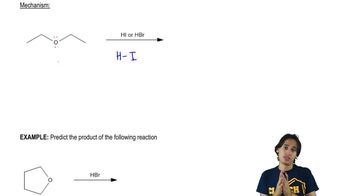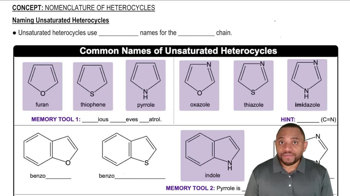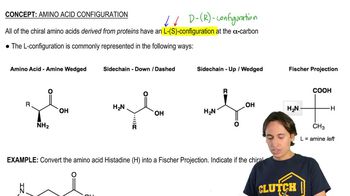Draw a condensed structure and a skeletal structure for each of the following:
a. sec-butyl tert-butyl ether
b. isoheptyl alcohol
 Verified step by step guidance
Verified step by step guidance Verified video answer for a similar problem:
Verified video answer for a similar problem:



 1:32m
1:32mMaster How to name ethers using the common naming system. with a bite sized video explanation from Johnny
Start learning